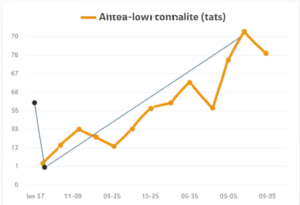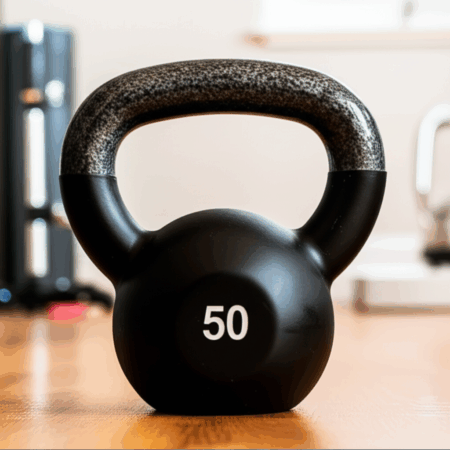Wahoo Fitness, a prominent name in fitness technology, has recently made headlines for its approach to handling increased tariffs on its products. Instead of directly raising the price of the product, Wahoo is incorporating the tariff surcharge into its shipping costs, leaving some customers surprised at checkout. This move, while perhaps intended to soften the blow of increased costs, has sparked debate about transparency and the true cost of Wahoo’s products.
The Wahoo TRACKR Radar and the Shipping Surprise
The issue came to light with the release of Wahoo’s new TRACKR Radar, a cycling radar and light. While the device is listed at $199.99 on Wahoo’s website, US customers are finding a $50 “service charge” added to their order during checkout, disguised as part of the shipping fee. This brings the total cost to $249.99.
Interestingly, this additional charge doesn’t apply to EU customers, who receive free shipping. The discrepancy stems from the manufacturing location of the TRACKR Radar: it’s made in China and thus subject to US tariffs, reportedly as high as 145%. Many of Wahoo’s other products, like the BOLT 3 and ROAM 3, are manufactured in Taiwan and are not subject to the same tariffs.
Is it a Shipping Charge or a Tariff?
Wahoo describes the additional fee as a “service charge” due to recent changes in the global supply chain. The company states that many of its products have become more expensive to procure and deliver. However, this explanation has been met with skepticism.
Critics argue that by disguising the tariff as a shipping charge, Wahoo isn’t being upfront with its customers about the true cost of the product. It also obscures the fact that the tariff is a result of political decisions. Some observers suggest that listing the tariff as a separate charge would be more transparent and might even create pressure for policy changes.
Consumer Reaction and the Transparency Issue
The primary concern for consumers is the lack of transparency. When the advertised price of the TRACKR Radar is $199.99, but the actual cost is $249.99 due to a hidden surcharge, it can feel misleading. This practice makes it difficult for customers to compare prices with other retailers, some of which, like REI, have directly increased the price of the TRACKR Radar to $250.
Some customers may feel deceived when they discover the extra charge only at the final stage of the checkout process. This lack of transparency can erode trust in the brand.
The Bigger Picture: Tariffs and the Fitness Industry
Wahoo isn’t the only company in the fitness industry grappling with the impact of tariffs. Other brands are also facing increased costs due to import duties, particularly on products manufactured in China. Some companies are choosing to absorb these costs, while others are passing them on to consumers through price increases or surcharges.
Blueseventy, a wetsuit manufacturer, announced it would be raising prices due to “the extreme and unexpected increase in import tariffs”. The company explained that it relies on manufacturing in China because there are no domestic manufacturers that can match the performance and quality of their wetsuits.
The decision of how to handle tariffs is a complex one for businesses. They must balance the need to maintain profitability with the desire to remain competitive and transparent with customers.
Wahoo’s Product Line: A Mix of Innovation and Practicality
Despite the controversy over tariff surcharges, Wahoo Fitness continues to be a popular choice for athletes and fitness enthusiasts. The company offers a range of products, including:
- Bike Computers: Wahoo’s BOLT and ROAM series are known for their user-friendly interface, GPS navigation, and integration with other sensors. The BOLT 3 and ROAM 3 are newer, more budget-friendly versions of the Wahoo ACE.
- Smart Trainers: The Wahoo KICKR series is a favorite among cyclists for indoor training. The KICKR CORE Zwift One, in particular, offers a realistic riding experience with automatic resistance adjustments and compatibility with virtual training platforms like Zwift.
- Sensors: Wahoo offers a variety of sensors, including speed, cadence, and heart rate sensors, as well as power meter pedals.
- Accessories: Wahoo also produces accessories like the Zwift Click, which allows for seamless virtual shifting when used with the KICKR CORE Zwift One.
- Radar: The Wahoo TRACKR Radar is their newest product, providing cyclists with increased awareness of approaching vehicles.
Alternatives to Wahoo
The fitness tech market is competitive, with several brands offering similar products to Wahoo. Some popular alternatives include:
- Garmin: Garmin is a well-known brand in GPS technology and offers a wide range of bike computers, smartwatches, and fitness trackers.
- Polar: Polar specializes in heart rate monitoring and offers a variety of fitness watches and sensors.
- Stages Cycling: Stages Cycling is known for its power meters and indoor bikes.
- Hammerhead: Hammerhead Karoo 2 is a premium bike computer known for its advanced mapping and data visualization.
The Bottom Line: Transparency Matters
Wahoo’s decision to bury the tariff surcharge in its shipping costs raises questions about transparency and consumer trust. While the company may have legitimate reasons for this approach, it’s essential for customers to be aware of the true cost of the products they’re buying.
As tariffs and global supply chain issues continue to impact the fitness industry, it’s more important than ever for companies to be upfront with their customers about pricing and surcharges. Transparency builds trust and allows consumers to make informed purchasing decisions.







